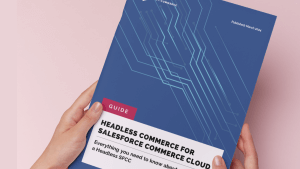What’s inside?
- Introduction & Insights by Front-Commerce CTO
- What is Headless Commerce?
-
Monolith vs. Headless
-
Headless SFCC: Is It Right for Your Business?
-
How to Take SFCC Headless
-
Alternatives to SFCC Default Themes
-
Frontend Comparison Chart
-
Case Study
Everything you need to know about Headless Commerce and SFCC
From the early days of static web pages to the responsive, feature-rich online stores of today, staying ahead of the curve is crucial.
Salesforce Commerce Cloud (SFCC) users often struggle with limited flexibility, innovation and personalization due to the monolithic nature of the platform. However, by adopting headless commerce, businesses can enhance their SFCC experience and overcome these challenges. Headless commerce separates the frontend and backend of the Commerce Cloud application, allowing for greater agility in building personalized customer experiences through APIs.
This approach enables businesses to innovate faster and deliver seamless customer experiences across various channels. SFCC supports headless commerce, allowing users to choose any compatible frontend and customize key components and functions for improved flexibility.
Salesforce offers multiple options for transitioning to headless commerce, including creating a custom technology stack to meet specific business requirements. In this guide, we dive deeper into whether Headless and SFCC are right for your business, the benefits of headless commerce, and a step-by-step guide on how to get started.
The questions is, are you ready to dive into the future of e-commerce?
